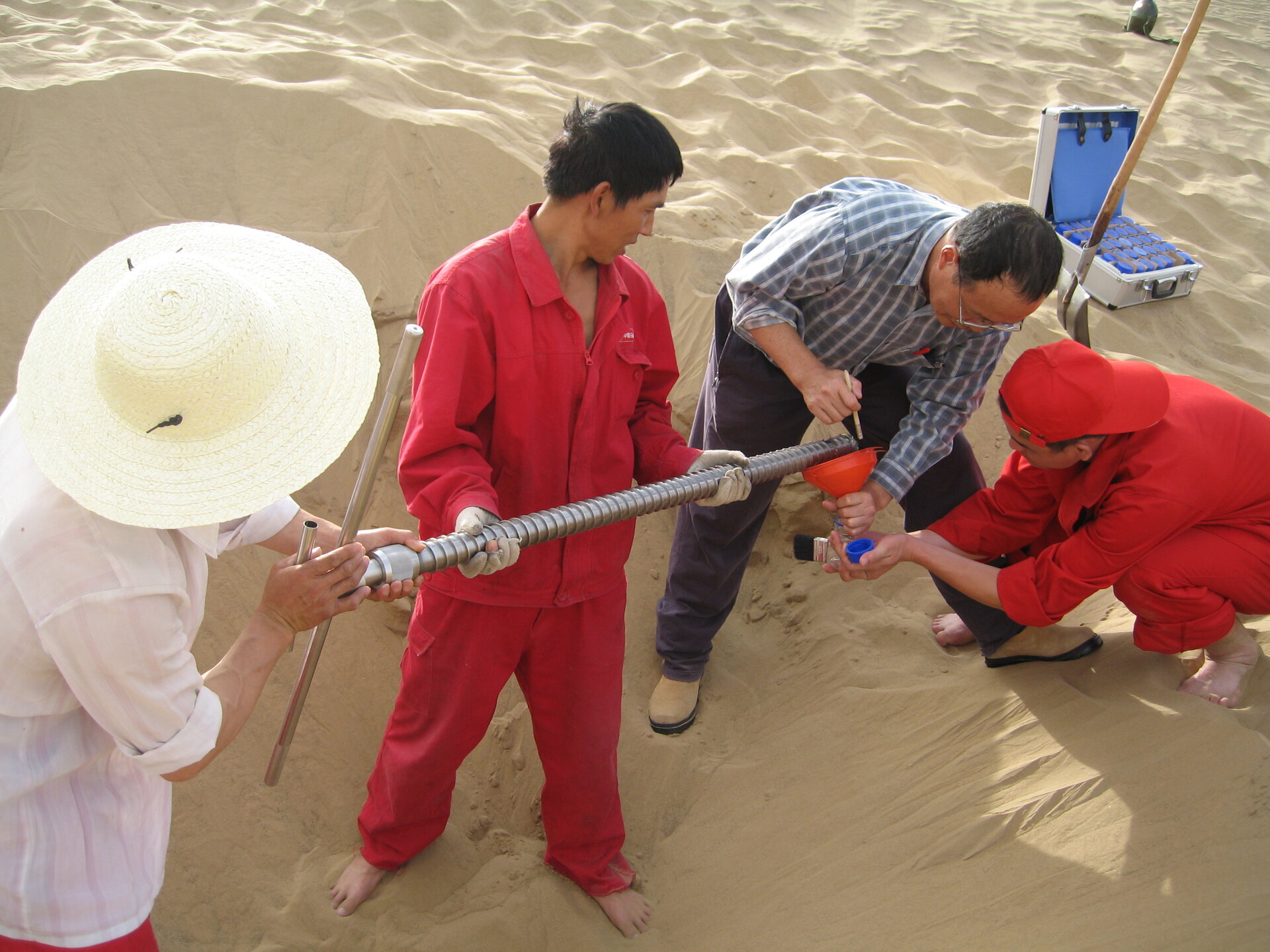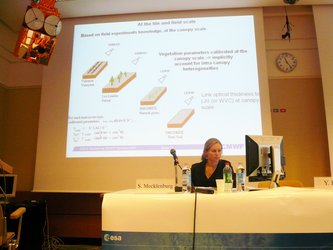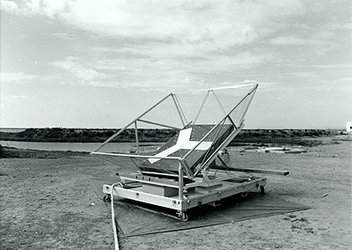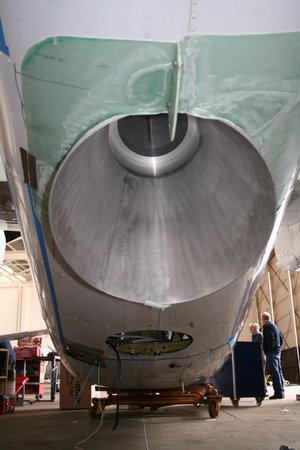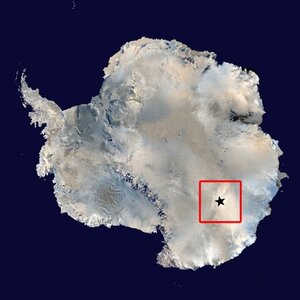SMOS goes Olympic
While Beijing gears up for the start of the Olympics, the city recently played host to a workshop dedicated to ESA's water mission SMOS. The workshop proved extremely useful in bringing the mission closer to the Chinese scientific community and consolidating important soil-sampling activities in the Takla Makan desert.
As well as providing an invaluable forum to present the Soil Moisture and Ocean Salinity (SMOS) mission to the Chinese scientific community, results from the first field experiments in the Takla Makan desert were presented and discussed. Meaning 'go in and you'll never come out', the Takla Makan desert in north-western China is one of the largest sand deserts in the world. As with the DOME-C station in Antarctica, its spatial homogeneity, thermal stability along with its almost total absence of moisture make the Takla Makan a suitable natural candidate to serve as reference point to verify the accuracy, precision and stability of the SMOS mission.

The workshop, organised by the Chinese Centre for Space Science and Applied Research (CSSAR), was attended by both of the SMOS mission's Lead Investigators, Yann Kerr and Jordi Font, as well as ESA's SMOS Instrument Principal Engineer Manuel Martin-Neira. Ignasi Corbella from the Polytechnic University of Catalonia, Spain working in the area of instrument calibration also attended the event. In addition, over 20 scientists and engineers from various Chinese institutes and universities participated in the workshop. Among them was Ji Wu Director of CSSAR and Weiguo Zhang the leader of the SMOS calibration and validation activities in China.
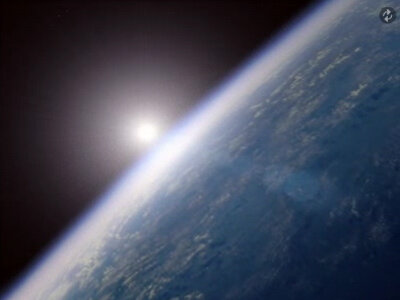
To deepen our understanding of the Earth's water cycle, SMOS will carry MIRAS, a sophisticated interferometric radiometer capable of observing both soil moisture and ocean salinity. This will be achieved by capturing images of emitted microwave radiation at 1.4 GHz (L-band). As well as developing a mission that will use a novel instrument in space, the mission also involves long-term work in the field to study anything that may affect the signal. Numerous ESA-led campaigns are carried out to validate the instrumentation but finding suitable sites that will serve as reference for the data is an important part of the validation and calibration process.
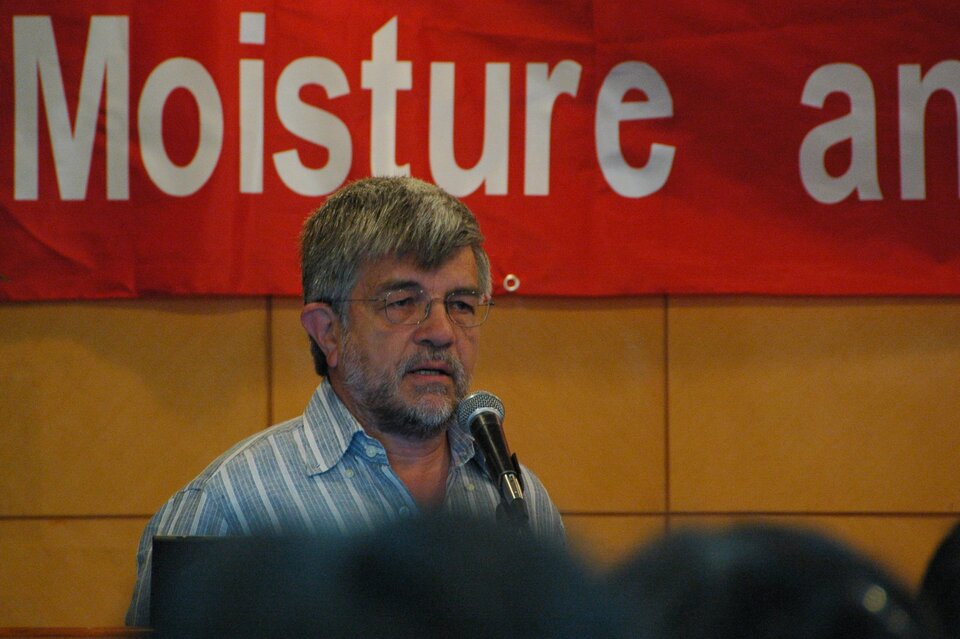
The first results from the soil-sampling experiments in the Takla Makan desert confirm how extremely arid the desert is. With water present measured as between only 0.05 and 0.3%, the so-called emitted 'brightness temperature', which will be observed from space, would always be stable within 1.5 K over this region. The SMOS mission uses the fact that all matter emits energy in the form of electromagnetic radiation – however, the amount of radiation depends on the electrical properties of that material. Since moisture affects these electrical properties, values of moisture in the soil can be derived. Therefore, these initial results show how the Takla Makan desert would serve as an excellent reference to understand verify the accuracy of SMOS data. With this in mind, further campaign activities are under preparation.
In addition to the experiment results being highlighted at the workshop, there were a number of presentations and discussions pertaining to the 'SMOSops' mission, a potential operational mission currently under study. If the mission goes ahead, CSSAR is expected to contribute an auxiliary radiometer to estimate sea-surface roughness and enhance salinity retrievals.


